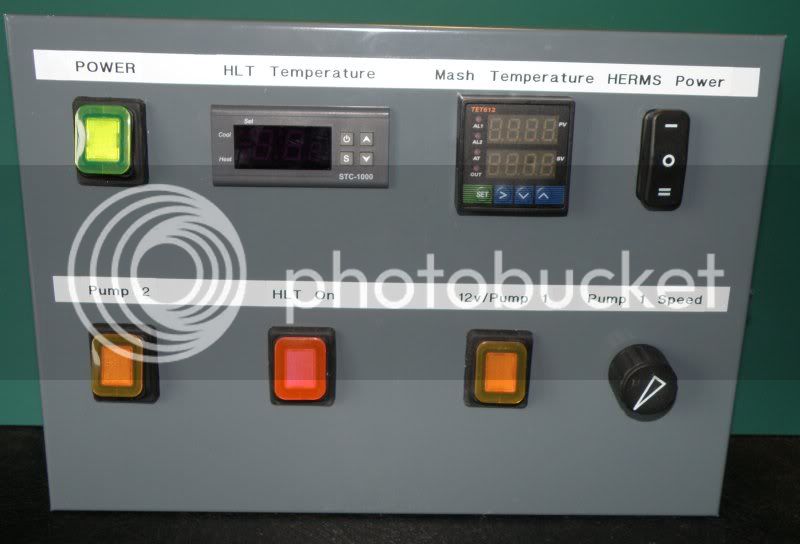Hi, I started brewing about two years ago, some kits first, now I just finished my fifth AG batch. And because I want repeatability of batches I decided to go HERMS way.
I already have 2, 50l SS pots (catering service) and now ordering 50l thermo box as a mash tun. Then I have got 2 TESCO value kettles, and another two or three I want to buy.
Now the questions :hmm:
1) I read, that the PID unit learns the process and then anticipate. But if i make one batch with single infusion and other want to do with 3 steps infusion? Or the PID unit have some memory and I can choose from many learned procedures?
2) Pump works all the time or not? because I saw both.
3) I also read, that the flow thru heat exchanger should be few litres/minute. I have got SS false bottom, but the sweet wort does not flow so fast (not having pump yet), so the pump literally sucks the wort?
4) I want to control temperature in HLT- so thats is first PID I suppose and one temperature probe, and the second one for HERMS itself. The second PID- I will have temperature probe on the outlet prom the heat exchanger? For example, i set the PID for 66°C and the element in heat exchanger will heat water in exchanger until the output temperature is acquired? I suppose that the temperature of water will be higher than setted 66°C.
5) which diameter of a copper pipe i should choose for heat exchanger? 10mm? and the length? I suppose that longer the better? And the pipe semihard or bendy stuff??
I sure have more question but just do not remember right now.
thanks for help folks
ps: please pardon my english, I live in non-English speaking country
I already have 2, 50l SS pots (catering service) and now ordering 50l thermo box as a mash tun. Then I have got 2 TESCO value kettles, and another two or three I want to buy.
Now the questions :hmm:
1) I read, that the PID unit learns the process and then anticipate. But if i make one batch with single infusion and other want to do with 3 steps infusion? Or the PID unit have some memory and I can choose from many learned procedures?
2) Pump works all the time or not? because I saw both.
3) I also read, that the flow thru heat exchanger should be few litres/minute. I have got SS false bottom, but the sweet wort does not flow so fast (not having pump yet), so the pump literally sucks the wort?
4) I want to control temperature in HLT- so thats is first PID I suppose and one temperature probe, and the second one for HERMS itself. The second PID- I will have temperature probe on the outlet prom the heat exchanger? For example, i set the PID for 66°C and the element in heat exchanger will heat water in exchanger until the output temperature is acquired? I suppose that the temperature of water will be higher than setted 66°C.
5) which diameter of a copper pipe i should choose for heat exchanger? 10mm? and the length? I suppose that longer the better? And the pipe semihard or bendy stuff??
I sure have more question but just do not remember right now.
thanks for help folks
ps: please pardon my english, I live in non-English speaking country








